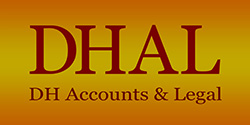If you’re self-employed, your business will have various running costs and expenses. You can take these costs away from your business income to work out the taxable profit.
Claim all business expenses and capital allowances and you can reduce your taxable profit.
Self-employed: Allowable expenses
-
Office costs: stationery and postage; phone, mobile, internet, email and fax bills; printing, printer ink, cartridges and other small office equipment costs; computer software; rent, business and waters rates, utility bills and insurance costs.
-
Travel costs: vehicle insurance, repairs and servicing, fuel, parking, hire charges, vehicle licence fees, membership, breakdown cover; train, bus, air and taxi fares; hotel room costs and meals on overnight business trips.
-
Clothing expenses:uniforms; protective clothing needed for your work; costumes for actors or entertainers.
-
Staff expenses: salaries, bonuses, pensions, benefits for staff or employees; agency fees; subcontract labour costs; employer’s National Insurance.
-
Cost of goods: goods bought for re-sale (stock); goods used in providing services; direct cost of producing goods; cost of raw materials used.
-
Financial costs: accountants, solicitors, insurances, surveyors and architects; professional indemnity insurance premiums; insurance policies; bank, credit card and other financial charges; hire purchase interest and leasing payments.
-
Marketing costs: advertising in newspapers, directories etc; bulk mail advertising; website costs; trade or professional journals; trade body or professional organisation membership.
Self-employed: Simplified expenses
Simplified expenses are a way of calculating some of your business expenses using flat rates instead of working out your actual business costs.
You don’t have to use simplified expenses. You can decide if it suits your business. You can use flat rates for:
-
vehicles business mileage
-
hours working from home
-
people living in business premises
Self-employed: Capital allowances
Capital allowance are commonly claimed on items that you might use in your business over several years. You can claim capital allowances:
-
plant and machinery – cars, vans, computers, tools
-
fixture and fittings – shelves, furniture, fittings
Self-employed: How to claim expenses and allowances
Business expenses
Add up all your allowable expenses for the tax year and put the total amount on your Tax Return.
Business expenses are only allowed in your accounts if they relate to that accounting period.
Capital allowances
If you want to deduct capital from your profit, you have to work out the value of your item. When you buy assets you can usually deduct the full value from your profits before tax using annual investment allowance (AIA).
Business and private use expenses
If you use something for both business and personal reasons, you can only claim allowable expenses for all business related expenses incurred wholly and exclusively for your business. In this case you’ll need to find a reasonable method of dividing your costs.
Business records
You must keep records of your business income and expenses for your tax return for at least 5 years after the 31 January submission deadline of the relevant tax year. Types of proof include:
-
all receipts for goods and stock
-
bank statements, chequebook stubs
-
sales invoices, till rolls and bank slips
You can find more information about expenses for self-employed on the GOV.UK
To make your life easier we have created a bookkeeping spreadsheet for you. It will give you income and expenditure totals for each month and for each category, as well as overall totals for the year. This spreadsheet is very simple and will help you keeping business financial records.
Download
Need help with completing your tax return, please contact us and our dedicated team will be happy to help.
Contact us
Follow us on Facebook to find more tips in business, accounting, tax and legal.



